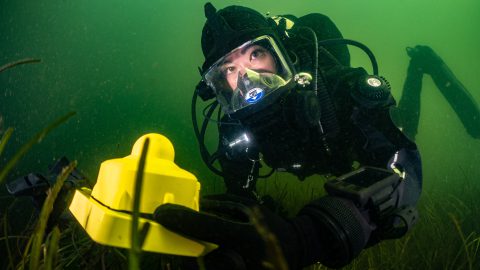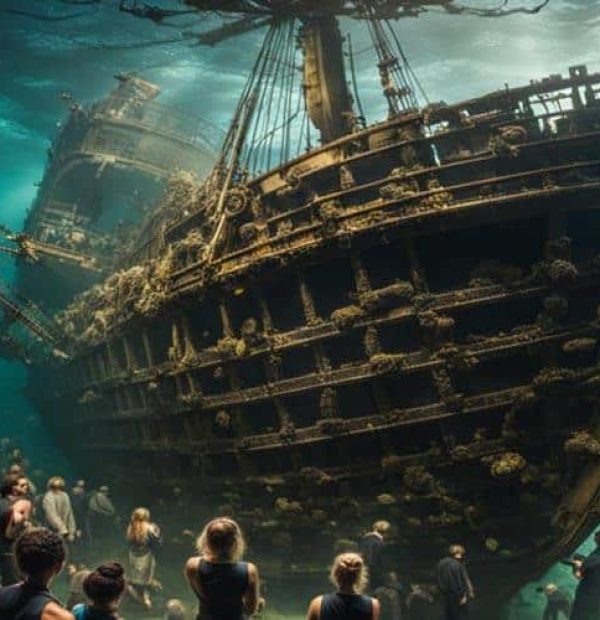Thursday, 16 May 2024
Menu

The log must first be thrown into the water to determine in which position it is most stable. Then a chamber or two must be hollowed out (the part that separates them is then called a bulkhead). The final stage is to form the bow and stern of the vessel, but this is not a prerequisite for it to float.
In addition, to increase the space inside the boat, a technique of widening the sides is used, taking advantage of the thermoplastic properties of wood. To achieve this, the vessel can be filled with water and hot stones, the sides can be pulled apart and blocked with struts to fix the new shape.
In Poland alone, the number of registered monohull boats in 2010 was 333 units (according to Ossowski). Since then even more have been discovered. Most date from the Middle Ages and modern times, while the oldest date from prehistoric times.
One of the latest discoveries was made in November 2016. Adam Witczak. During a dive in Lake Niedzięgiel, near Gniezno, he came across the remains of a one-footed boat. He informed the Office for the Protection of Monuments in Poznań of his discovery, thus giving scientists the chance to conduct research.
Soon, several articles appeared on the Internet, reporting on the new find. Most of them compared the discovery to a hollow-boat from J. Lednicki, dated to the 10th century A.D.; it was unfoundedly suggested that the vessel came from the Middle Ages, but recent analyses contradict this.
Dating one-legged boats by analogy is risky. The origins of their manufacture date back to prehistoric times (e.g. a dugout canoe of this type dating back to c. 7,000 BC is known from Pesse in the Netherlands, another slightly younger – c. 5,000 BC – comes from Kuahuqiao in China). – comes from Kuahuqiao in China).
The tradition of making this type of unit has survived in some places even to the present day. Due to its simple form, which has remained almost unchanged for centuries, it is necessary to carry out the so-called C14 dating (based on the constant rate of decay of radioactive carbon in organic materials – e.g. wood, which makes it possible to determine the approximate moment when the tree was felled) or a dendrochronological study to determine the time of its creation.
Solving the mystery of the vessel’s age was one of the main objectives of the student research project carried out by the Underwater Archaeology Research Group at the University of Warsaw. However, as cutting out a sample irrevocably changes the shape of the monument, a detailed photographic and drawing documentation was carried out beforehand, and photogrammetry and a 3D model were made.
With just 32 minutes of footage, more than 1,000 overlapping photographs were captured and compiled to create a three-dimensional model. The construction details of the vessel were photographed with a digital camera, measured and included in the drawing.
The preserved part of the boat measures exactly 5.58 m; at its widest point it reaches 0.71 m. Closer to the stern part the remains of a bulkhead have been preserved, protruding 29 cm from the bottom. Near the bulkhead, traces of burning are visible, which may indicate that the log gouging process was accelerated by fire. C14 dating showed that the vessel was probably built in the early 20th century.
The research of the dugout canoe from Lake Niedzięgiel is an excellent example of cooperation between divers and underwater archaeologists. As new discoveries are usually made by diving enthusiasts, it is extremely important that they are aware of how to deal with a potential monument.
First of all, the artefact should not be moved, or even worse, taken out of the water (rapid drying of old wood is destructive for it). Moreover, the place where the artefact rests should be secured as far as possible and a GPS bearing should be downloaded, or landmarks in the surroundings should be memorised so that the location can be pinpointed as precisely as possible.
Then the discovery should be reported to the nearest Voivodeship Historic Preservation Office. You can also contact universities which offer underwater archaeology (e.g. the University of Warsaw, UMK in Toruń or the University of Gdańsk) and suggest them to investigate
case.
Photo: A. Brzóska, D. Brzóska
[pro_ad_display_adzone id=”31298″]










Welcome to DIVERS24.COM, your daily source of scuba news, freediving, scuba diving information, and equipment reviews. Our comprehensive coverage of the dive industry from A to Z provides you with all the latest scuba news, training updates, underwater photography tips, and everything else related to scuba diving. Whether you’re a beginner or an experienced diver looking for more knowledge about scuba gear or techniques – we’ve got it covered! With our in-depth articles written by experienced divers who have been there and done that, you are sure to find exactly what you need here at Divers24.com. Dive into scuba news today!
Underwater Media Sp. z o.o.
Szafarnia 11/F8,
80-755 Gdansk, Poland
Welcome to DIVERS24.COM, your daily source of scuba news, freediving, and scuba diving information. Sign in for a weekly news update and discount coupons for dive gear and apparel.
@2023 - underwatermedia.pl. All Right Reserved. Designed and Developed by Tworzenie stron internetowych Gdansk

The Divers24 portal is currently the largest online medium treating diving in Poland. Since 2010 we have been providing interesting and important information from Poland and around the world on all forms of diving and related activities.
Contact us: info@divers24.com